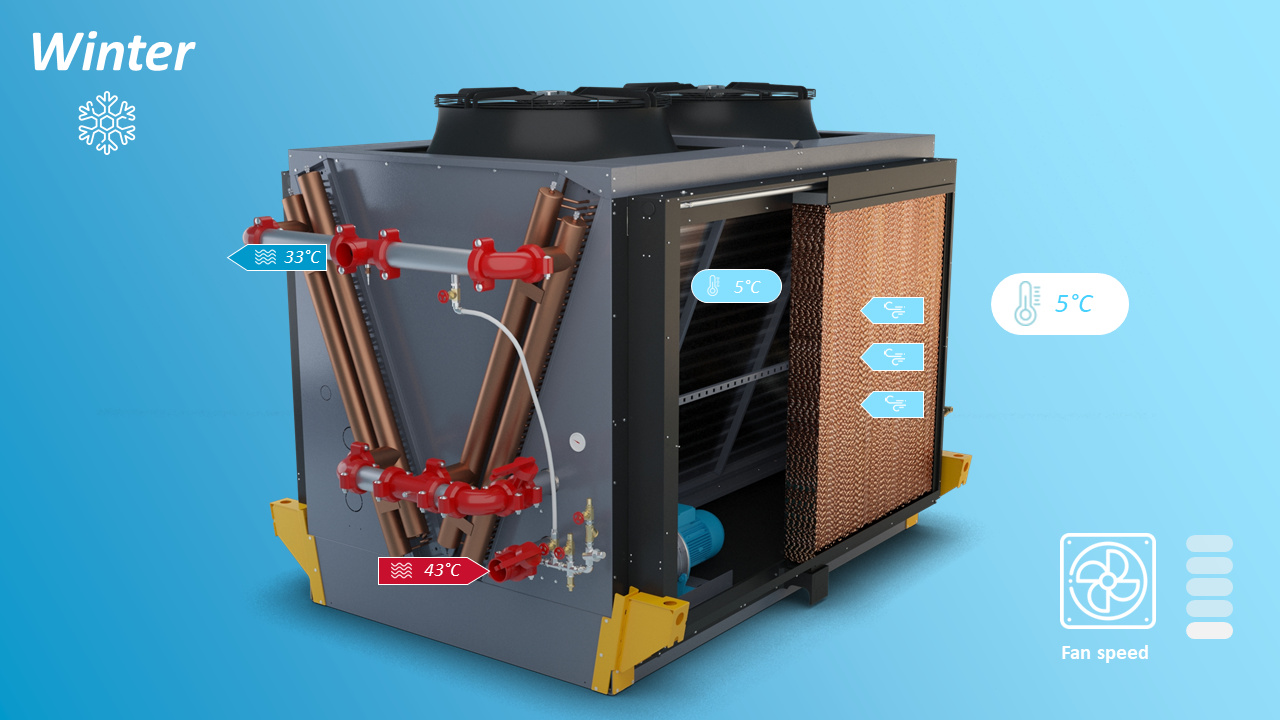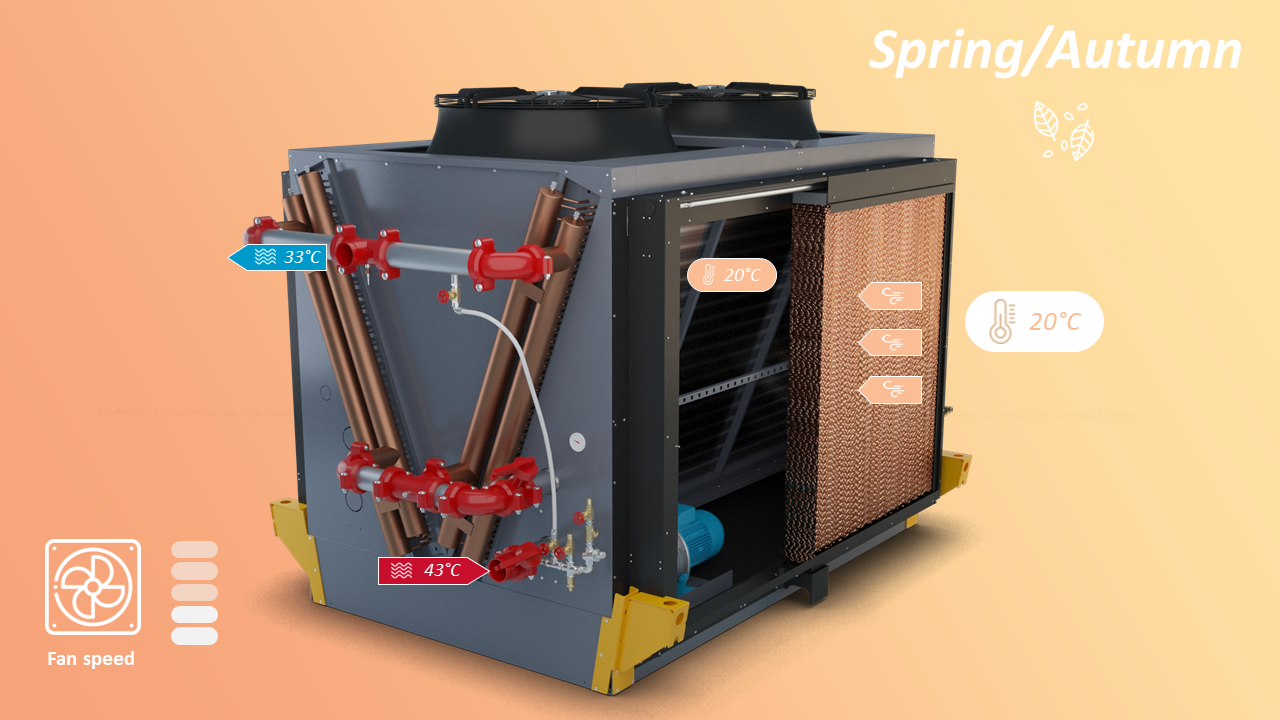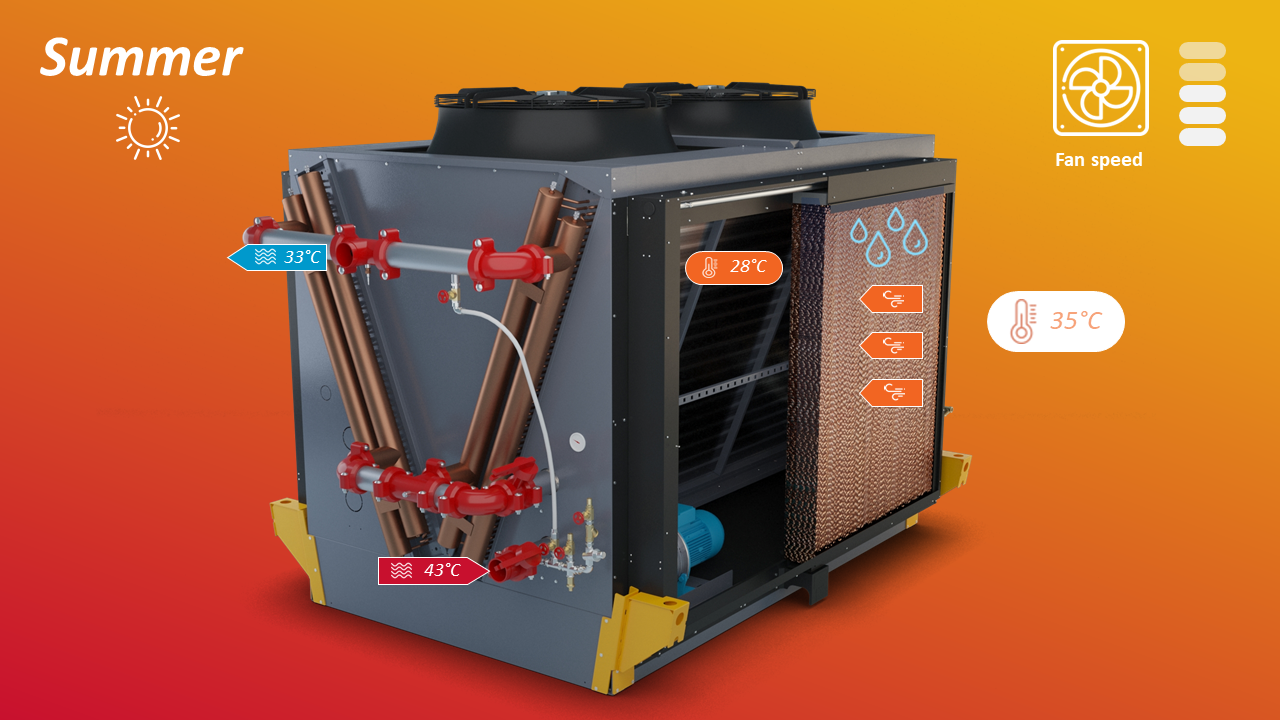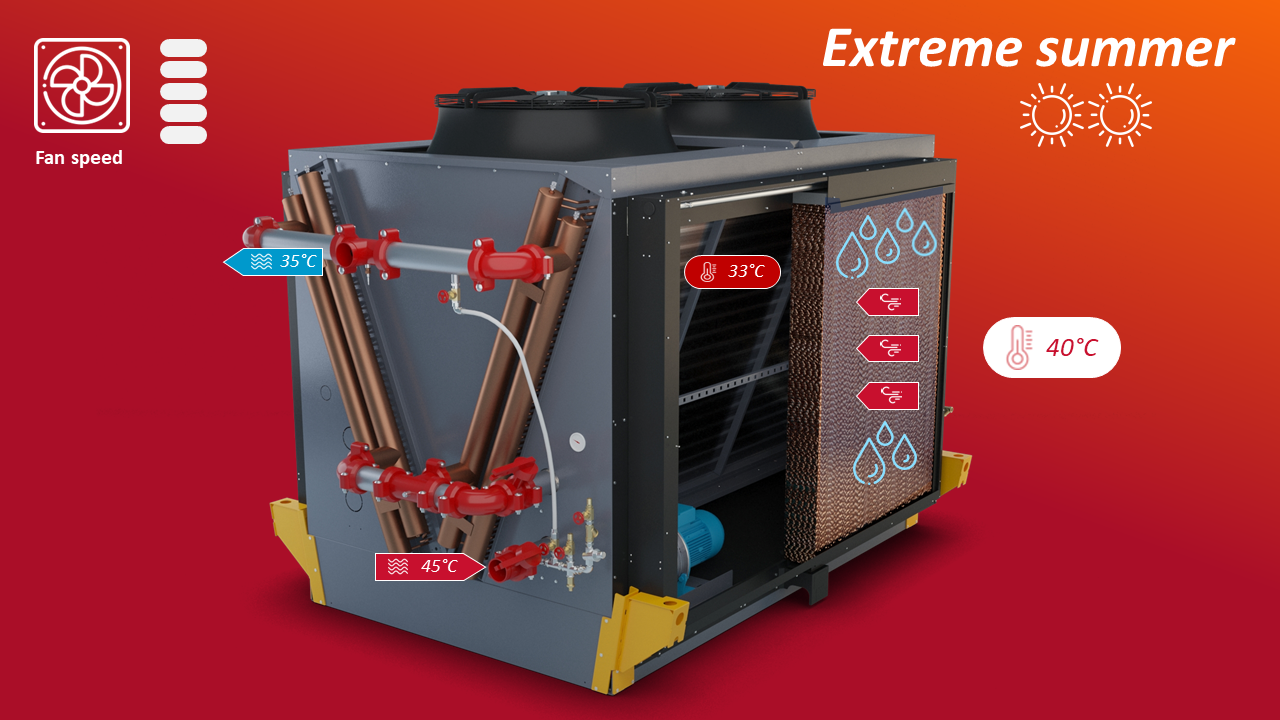Environment and Energy Savings
Manufacturers of cooling equipment are increasingly focused on reducing energy consumption and minimizing CO2 emissions. Our company addresses this challenge with its TDV product line, which combines the energy-saving benefits of dry fluid coolers with the thermal efficiency of adiabatic systems. TDV is suitable to cool down a single or multiple water-cooled equipment.
In the past, industrial cooling relied on two systems: standard chillers with refrigerant compressors and cooling towers. Chillers regulate process temperatures but consume significant energy. Cooling towers, while more energy-efficient, have environmental drawbacks such as water treatment requirements, the risk of legionella and performances limited by the ambient air wet bulb temperature.TDVs offer a promising solution by optimizing performance while considering environmental impact.
Dry and Wet Bulb
- Dry Bulb Temperature: This refers to the ambient air temperature, measured without considering humidity or moisture. It represents the actual temperature in the environment.
- Wet Bulb Temperature: Obtained by allowing water to come into contact with the air, the wet bulb temperature accounts for evaporative cooling. As water evaporates, it removes heat from the air, resulting in a lower temperature. Wet bulb temperature is inversely proportional to air humidity.
In the operation of TDV fluid coolers, the adiabatic system leverages wet bulb principles. When enabled, the process water provided by the TDV unit remains consistently colder (by several degrees) than the surrounding ambient air.



